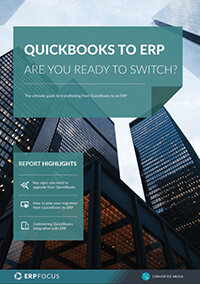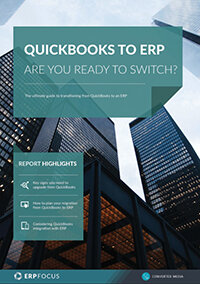QuickBooks to ERP: Integrate, Migrate, or Bail out?
Change is always hard to swallow when a small business faces the prospect of systems growth. But, when considering an essential operational dependency like a company’s financial platform, on top of integrating new resources management requirements, decisions on whether or not to migrate QuickBooks processes to ERP can become even more daunting.
QuickBooks Integration
If your enterprise is micro or small in scale and it appears that ERP-like requirements have come to the fore, QuickBooks does offer a long list of third-party integrations that offer ERP capabilities and an alternative to a complete migration of QuickBooks, these include but are not limited to the following:
-
NumberCruncher Inventory and Order Management Software - NumberCruncher provides order management functionality including purchasing, shipping, order entry, production and inventory
-
MISys Manufacturing - Integrated manufacturing; manage raw materials and WIP, schedule production, use time-phased MRP, and more
-
Fishbowl Inventory - Pitching itself as the number one inventory management solution for QuickBooks, Fishbowl offers manufacturing, distribution and retail companies a range of inventory management tools. These include order management, bar coding, multiple locations and more
-
ACOWIN for Windows - ACOWIN integration with QuickBooks provides an option for companies looking for a services and project management system alongside financials
-
E2 Shop System - E2 handles quotes, scheduling, job costing, performance analysis, purchasing, inventory, bar code data collection, shipping, quality assurance, and contact management
QuickBooks Migration
However, if you currently operate a QuickBooks on-premise system, and have researched the integrated route but still feel that you’re not getting what you need, the next move toward a true ERP option in QuickBooks’ lexicon may be to migrate to the company’s cloud-based variant. Intuit now offers a SaaS product entitled QuickBooks Enterprise that allows the user to not only directly translate a company’s current data to a more expansive GAAP platform, but also allows cloud-based interaction with the third-party add-ons like the aforementioned FishBowl Inventory system.
Change is always hard to swallow when a small business faces the prospect of systems growth.
However, these value points will not help you much if you are looking for more sophisticated manufacturing or production scheduling, comprehensive project management, extended internal data-manipulation, plus the ability to directly import or export record elements at-will, apply effective drill-down relational analysis, and finally, leverage enhanced reporting capabilities requiring deep SQL database transparency. On top of these significant operational limitations, there are the previously mentioned speed-of-response issues, plus generally weak systems compliance when it comes to the potential of extending smart-devices utilization.
If this litany of constraints, whether they’re operational, technical or intellectual, have lead your business to the conclusion that it is time to bail out of QuickBooks all together, the next step is to begin a comprehensive research process driven by a migration from QuickBooks toward a more expansive ERP system.
Free white paper

Quickbooks to ERP: Are You Ready to Switch?
Get the definitive guide to converting your business from Quickbooks to ERP

Related articles
-

Nine signs you need an eCommerce ERP integration
A guest blog from Brightpearl discussing eCommerce ERP and integration
-

Secret KPI: Why Your ERP Implementation Team Matters More Than Software
Learn how Godlan ensures successful ERP implementation for manufacturers with proven strategies &...
-

QuickBooks vs ERP: What ERP does better
Could your accounting & inventory management benefit from upgrading to ERP?

